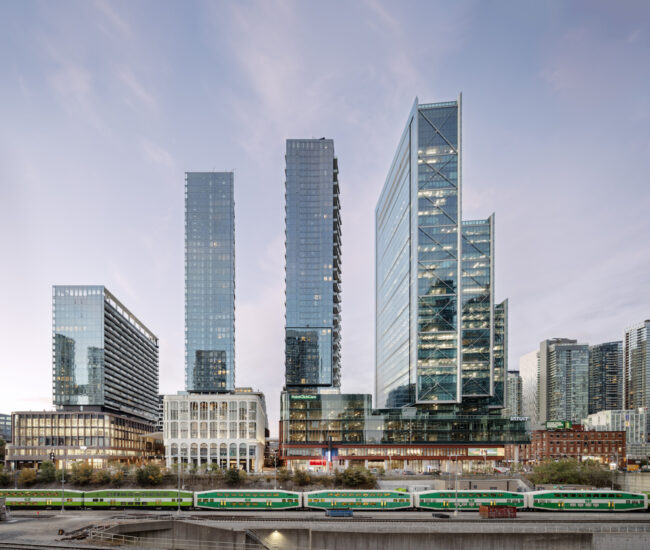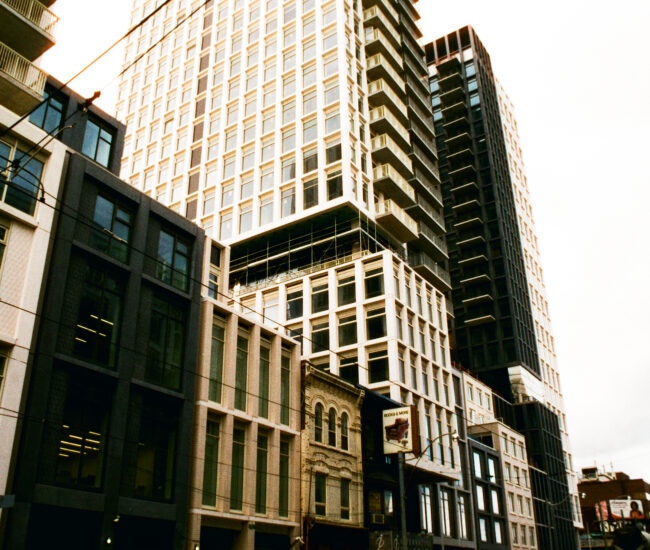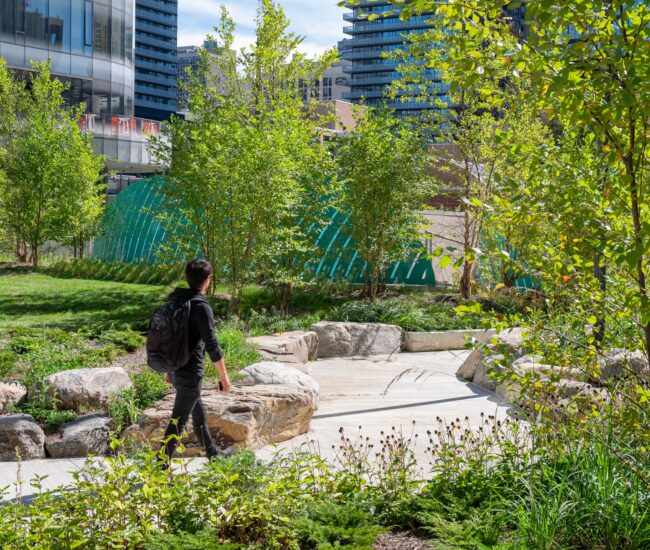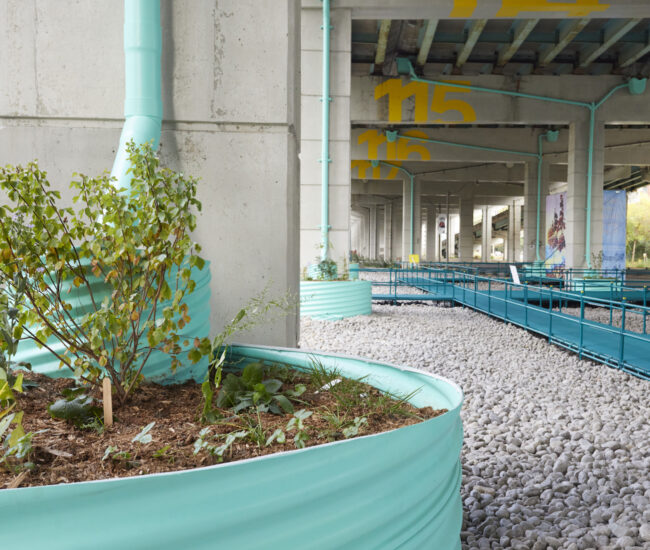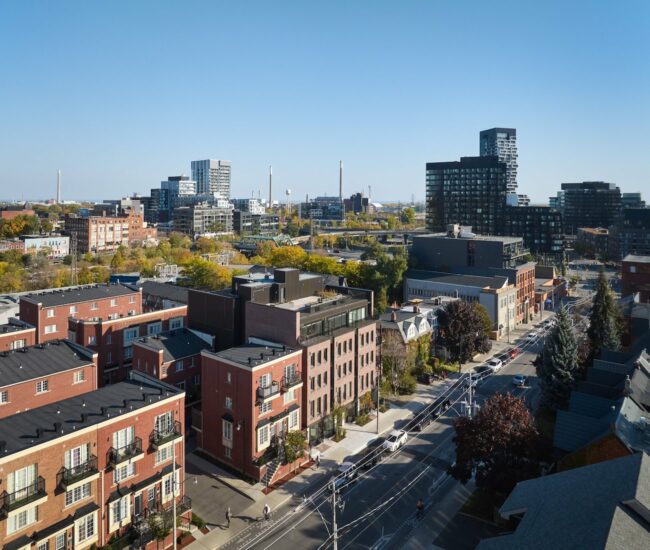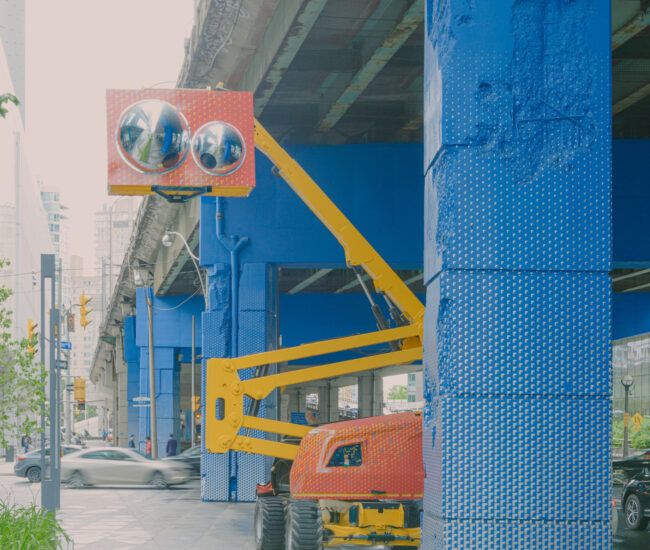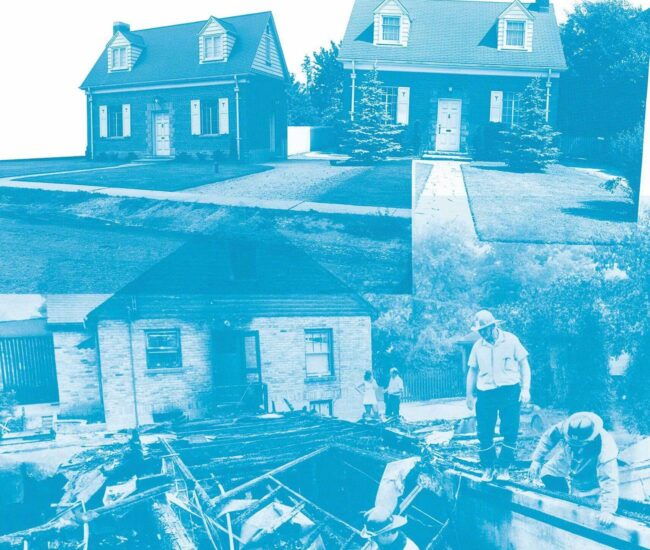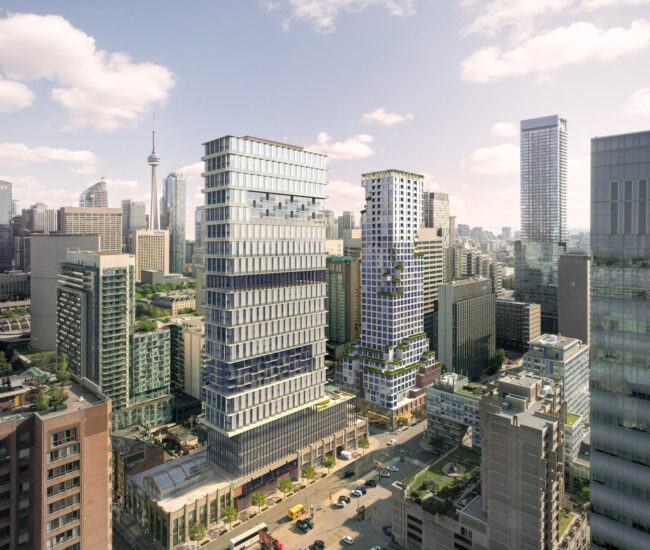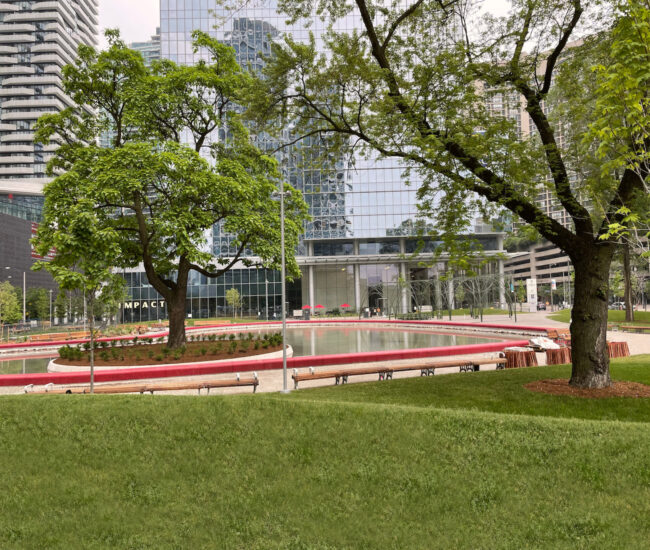Art Lovers Commute to the TTC’s Spadina Extension
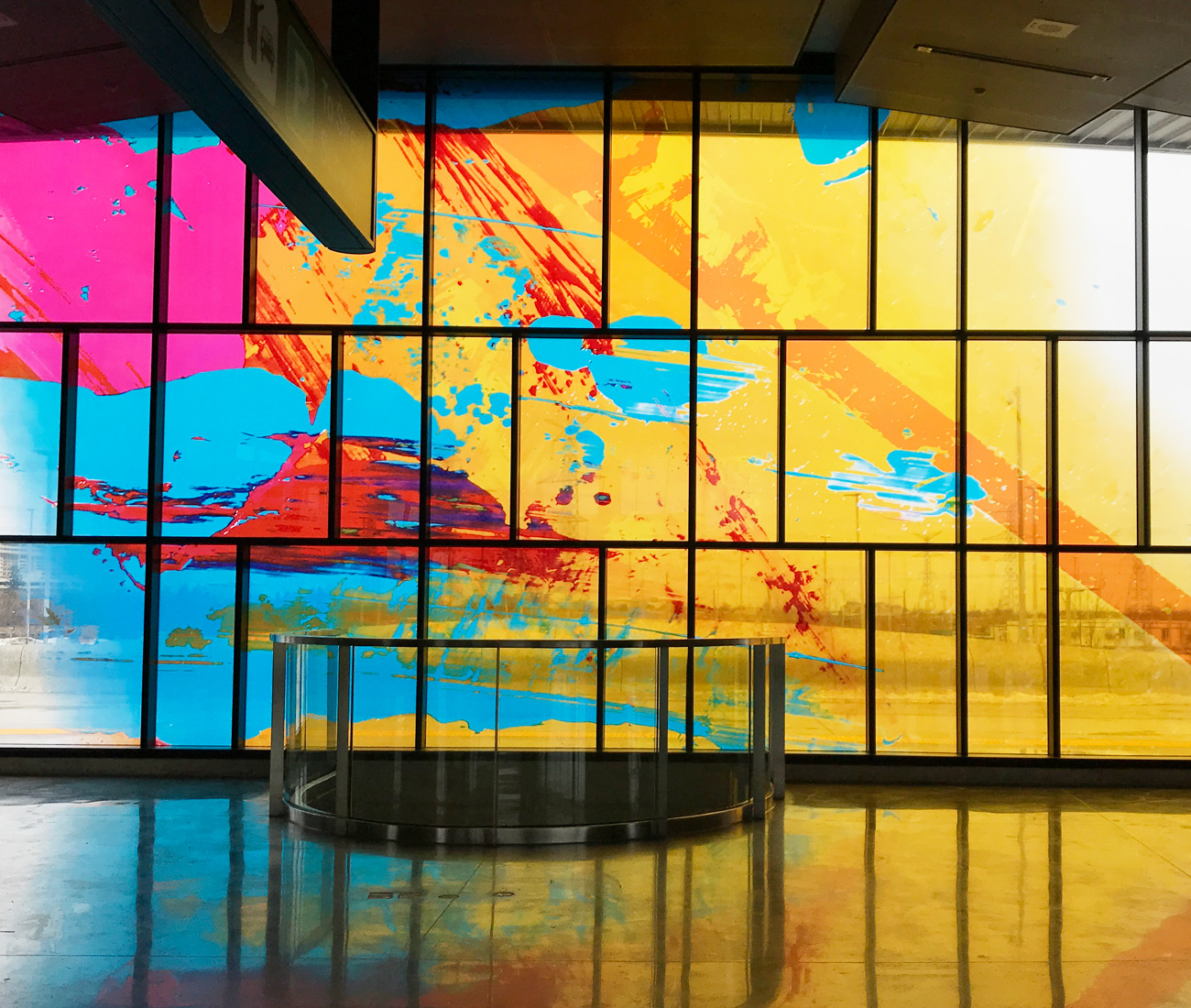
The Rocket’s latest subway extension provides public transit riders with some stunning architectural features and installations
When the Toronto Transit Commission’s $34-billion Spadina Extension opened its turnstiles in December 2017, it was met with awe and doubt. Built over seven years, the expansion adds six new subway stations to the nether regions of the city. Many citizens and politicians are thrilled that one of those stations (designed by Foster + Partners) will finally connect the downtown core to York University, Toronto’s second largest university campus. But there is real concern the other five stations, which are mostly located in suburban areas, won’t have enough density to support the line.
Time will tell if the new infrastructure will spur on development as planned. For now, its clear the stations are poised to become true landmarks. Each one is conceived by top international firms (including Will Alsop’s aLL Design and Grimshaw Architects of London) with commissioned art installations as a major interior feature.
The most hyped piece is an interactive installation at Pioneer Village Station, by Berlin artists Jan and Tim Edler (also known as realities:united). Called LightSpell, and built with a $1.9 million budget, the touch-screen project is engineered to display text written by the public via keyboard terminals that are located along the subway platform. But the piece has remained dormant since the stations opened on December 17, 2017, after concerns that, given the current political climate in the world these days, the screens might be used to promote hate speech. A resolution has yet to be found.
In the meantime, we took a ride on the new line to check out the other art pieces installed on platforms and up escalators. Here are the projects that grabbed our attention the most.
Spin at Downsview Park

Bayview Station was once declared one of the most beautiful stations in the world, and that’s due to the work of Panya Clark Espinal. For that piece, the Toronto artist devised 24 trompe l’oeils. She has replicated on that concept again, though on a much larger scale at the new Downsview Park, with six floating rings, the largest of which lives in the station’s entrance (above).

To develop the largest rings, Clark Espinal worked with architect Nathaniel Grey to develop an anamorphic projection that, when viewed from six vantage points, create a single continuous ring. Grey worked up a numerically accurate rendering of the station using FormZ; Clark Espinal then crafted hand-drawn rings, which she applied to the models. “Designing it was a bit of a game,” she told us. “We had to figure out where people could stand to view these floating rings, but also where it could be rendered into the architecture.”

It wasn’t simple. The illustration had to be rendered into various materials, including terrazzo floors, enamel metal panelling, ceramic wall tiles and ceiling panels. Clark Espinal then deconstructed each portion of the ring into PDFs, which were passed along to tradespeople. The end result is very effective impression of rings floating in space.”I feel like the type of work I’ve made can endure for a very long life. That is one of my objectives in creating public art,” says Clark Espinal. “There’s a timelessness to the imagery that’s integrated into the architecture of the station.”
Vaughan Metropolitan Centre’s Atmospheric Lens

The Spadina Extension ends at Vaughan Metropolitan Centre, a station designed by Grimshaw Architects and Arup Canada that is destined to become a future urban hub, with Diamond Schmitt Architects now working on a pedestrian-friendly district that will surround the station. While still under construction, the station’s most stunning feature is now in place: a mirrored dome by artist and architect Paul Raff.

For Atmospheric Lens, Raff says he worked closely with the Grimshaw team to create what he calls an “inside-out mirror ball,” made from polished steel and chromated panels. As riders emerge from the mezzanine level, they’re greeted with a dynamic, kinetic dome that reflects the busy atmosphere of a terminus.

Raff studied the sun’s angles throughout the year and developed a pattern of perforations that will allow light to penetrate the interior throughout the year. Depending on where you’re standing, the kaleidoscopic ceiling reflects either the station’s bustling interior or the outdoor environment. That’s intentional, Raff says. “Architecture is what separates us from the natural world. Due to the oblong shape of the building (it’s actually shaped like a contact lens) we had a chance to develop an articulation and extension of the natural world.”
York University Station’s Piston Effect

Designed by Foster + Partners, York University is expected to be the busiest station, with an estimated of 27,000 students and commuters using the stop every day. Its boomerang-shaped profile, defined by a curvaceous rooftop, sits on the east end of the campus. Foster + Partners has likened it to Canary Wharf in London and the Bilbao Metro – two stations the firm completed for areas that were under-connected to public transportation.

The station has already become a favourite among transit enthusiasts due to its dramatic oval entrances and natural light-filled concourse. Yet the station also impresses with its understated details. London interaction designer Jason Bruges‘ LCD installation, Piston Effect, is so subtle many commuters may miss it entirely.

Burges outfitted the station’s platform ceilings with LCD panel displays, which react to the pressure changes of trains entering the station (called the piston effect). Each time a train arrives, visitors are treated to a wave-like display of light, though it’s certainly less bold than Bruges’ lighting installations in similar environments around the world, including York Minster’s Light Masonry or London’s Digital Fountain.
Highway 407 Station’s Silk-Screened Window

Highway 407, by AHR Global, is a transit hub, so its first function is utilitarian: along with connecting to Torontos’ transit, it’s a nexus of two suburban systems – York Region Transit and the GO Train. It also houses nearly 600 parking spots. The station, however, is hardly drab, with one dominated glass wall given over to a colourful mural by Toronto artist David Pearl.

The station was built column-free to encourage natural light into multiple areas of the building. Pearl took advantage of that, and covered one of the bus terminal’s floor-to-ceiling windows with a 100-foot silkscreened pattern. He also added a translucent splash of colour to the otherwise monochromatic interior. It’s especially stunning when reflected off the station’s polished concrete floors during daylight hours.


